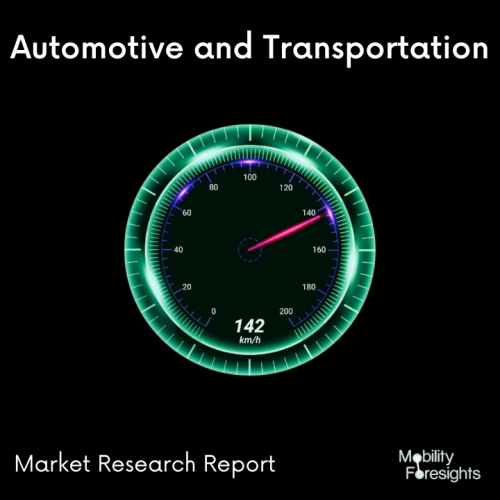
- Get in Touch with Us

Last Updated: Apr 25, 2025 | Study Period: 2023-2030
Any sort of automobile utilized for professional or commercial reasons is referred to as a commercial vehicle. These automobiles are primarily made for the commercial transportation of passengers, goods, or both. To meet the needs of diverse sectors and transportation requirements, commercial vehicles are available in a variety of sizes, types, and combinations.
Here are a few popular commercial vehicle types:Trucks: Trucks are adaptable commercial vehicles created for the movement of cargo. Light-duty pickup vehicles and heavy-duty semi-trailer trucks that are utilized for long-distance freight transportation are among them. Depending on their size and weight capacity, vehicles can be further divided into light trucks, medium trucks, and heavy trucks.
Vans: Vans are frequently utilized in the business world for services including utility work, passenger transportation, and delivery. They are appropriate for a variety of purposes since they offer enclosed cargo space and different passenger capacities.
Buses: Buses are substantial commercial vehicles built for passenger transportation. They are frequently utilized for interstate travel, charter services, public transportation, and school transportation. Buses come in a variety of sizes, from compact minibusses to large coaches with lots of seating.
Taxis: Taxis are professional automobiles used to provide on-demand passenger transportation services. They can be hailed on the street or hired through dispatch systems, and they are normally licensed and regulated by municipal authorities.
Delivery vans and trucks: These automobiles are created expressly to convey items for courier services, logistics firms, and delivery services. They frequently come equipped with compartments, racks, or refrigeration systems to handle various kinds of cargo.
Dump trucks, concrete mixers, excavators, bulldozers, and other specialist vehicles are examples of construction and heavy equipment vehicles. These vehicles are employed in infrastructure, mining, and construction projects. These trucks are made to carry huge loads and carry out particular jobs on construction sites.
Commercial Trailers: In addition to trucks and other vehicles, commercial vehicles also contain trailers. These trailers can be utilized as mobile offices or storage facilities in addition to hauling cattle, products, and perishable items.
Depending on their function and size, commercial vehicles frequently need particular licensing, permits, and adherence to certain rules. To ensure safety and adherence to local laws, they are subject to commercial vehicle regulations, inspections, and maintenance requirements.Commercial vehicles assist the transportation of people, services, and materials for commercial reasons across a wide range of industries and sectors.

The Indian Commercial Vehicle Market Share accounted for $XX Billion in 2022 and is anticipated to reach $XX Billion by 2030, registering a CAGR of XX% from 2023 to 2030.
Tata Motors introduced the Prima, the country's first truck with ADAS similar to that found in cars, and Signa, a Medium & Heavy Commercial Vehicle (M&HCV) truck fuelled by compressed natural gas. In addition, a new line of Intermediate & Light Commercial Vehicle (I&LCV) tippers and trucks has been introduced to fulfill the infrastructure and logistical demands that are expanding quickly.
According to the official release, these trucks further strengthen Tata Motors' well-established "Power of 6" benefit offering, which aims to increase fleet profitability by delivering improved productivity and lower total cost of ownership (TCO).
| 1 | Market Segmentation |
| 2 | Scope of the report |
| 3 | Abbreviations |
| 4 | Research Methodology |
| 5 | Executive Summary |
| 6 | Introduction |
| 7 | Insights from Industry stakeholders |
| 8 | Cost breakdown of Product by sub-components and average profit margin |
| 9 | Disruptive innovation in the Industry |
| 10 | Technology trends in the Industry |
| 11 | Consumer trends in the industry |
| 12 | Recent Production Milestones |
| 13 | Component Manufacturing in US, EU and China |
| 14 | COVID-19 impact on overall market |
| 15 | COVID-19 impact on Production of components |
| 16 | COVID-19 impact on Point of sale |
| 17 | Market Segmentation, Dynamics and Forecast by Geography, 2023-2030 |
| 18 | Market Segmentation, Dynamics and Forecast by Product Type, 2023-2030 |
| 19 | Market Segmentation, Dynamics and Forecast by Application, 2023-2030 |
| 20 | Market Segmentation, Dynamics and Forecast by End use, 2023-2030 |
| 21 | Product installation rate by OEM, 2023 |
| 22 | Incline/Decline in Average B-2-B selling price in past 5 years |
| 23 | Competition from substitute products |
| 24 | Gross margin and average profitability of suppliers |
| 25 | New product development in past 12 months |
| 26 | M&A in past 12 months |
| 27 | Growth strategy of leading players |
| 28 | Market share of vendors, 2023 |
| 29 | Company Profiles |
| 30 | Unmet needs and opportunity for new suppliers |
| 31 | Conclusion |
| 32 | Appendix |